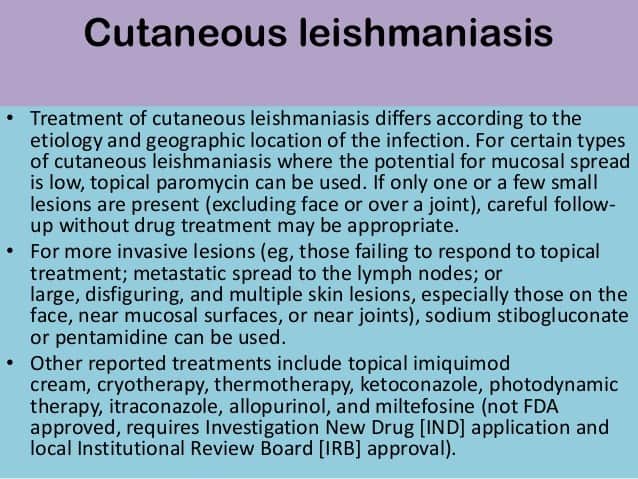TREATMENT OF CUTANEOUS LEISHMANIASIS WITH INTRALESIONAL CHLOROQUINE VS INTRALESIONAL MEGLUMINE ANTIMONIATE
Comparative Analysis of Treatment Response in Cutaneous Leishmaniasis: Intralesional Chloroquine vs. Intralesional Meglumine Antimoniate
Authors: Rifat Yasmin, Ikramullah Khan, Syed Afaq Ahmad
Affiliation: Pakistan Institute of Medical Sciences, Islamabad
Abstract
Background: Cutaneous leishmaniasis (CL), primarily caused by Leishmania major, is a prevalent condition in Pakistan. For cases involving simple lesions, localized treatments such as intralesional antimony compounds hold significance. This study aims to systematically compare the efficacy of intralesional chloroquine with meglumine antimoniate in treating CL.
Objective: The primary objective of this research is to evaluate and systematically compare the therapeutic outcomes of intralesional chloroquine and intralesional meglumine antimoniate in the treatment of CL.
Patients and Methods: Conducted as a quasi-experimental study, this research included 60 patients aged over 3 years with 1 to 3 CL lesions. Patients were categorized into two groups: the intralesional chloroquine treatment group and the intralesional meglumine antimoniate control group. Both treatment modalities were administered once weekly for 8 weeks, with a dosage of 1cc per cm2 of lesion. Additional injections were administered to patients showing partial response.
Results: Both treatment strategies exhibited a robust 100% response rate. However, the meglumine antimoniate group required a notably higher number of injections compared to the chloroquine group (p<0.05). Notably, both drugs were well-tolerated by the patients.
Conclusion: Intralesional chloroquine emerges as an effective, safe, and cost-efficient alternative to meglumine antimoniate for the treatment of CL.
Keywords: Cutaneous leishmaniasis, intralesional, chloroquine, meglumine antimoniate
Introduction
Despite considerable progress in the treatment and control of cutaneous leishmaniasis (CL), the disease remains a significant public health concern, particularly in regions like Afghanistan, Iran, Iraq, Algeria, Saudi Arabia, Peru, and Pakistan. The World Health Organization (WHO) identifies leishmaniasis as endemic in 88 countries, posing a risk to around 350 million people globally. While most CL lesions resolve on their own, intervention is warranted in specific cases such as early-stage lesions, multiple lesions, cosmetically sensitive areas, mucosal involvement, and immunosuppression. The dual therapeutic goals encompass both clinical healing and parasite eradication. However, finding effective, accessible treatments remains a challenge. While pentavalent antimony compounds remain the primary treatment approach, they exhibit concerns related to toxicity and resistance. This study investigates the potential of intralesional chloroquine as an alternative treatment modality.
Materials and Methods
Conducted at the Department of Dermatology, Pakistan Institute of Medical Sciences, Islamabad, this quasi-experimental study enrolled patients aged over 3 years with 1 to 3 lesions. Patients with lesions exceeding 5 cm, those undergoing concurrent antileishmaniasis treatment, and pregnant individuals were excluded. The patients were allocated into two groups: the intralesional chloroquine (Group A) and intralesional meglumine antimoniate (Group B) groups. Both groups received 8 weekly injections (1cc per cm2 of lesion). Patients showing partial response received additional injections.
Results
Of the 60 patients enrolled, each group consisted of 30 individuals. Both treatment modalities achieved an impressive 100% response rate. However, the meglumine antimoniate group necessitated a significantly higher number of injections compared to the chloroquine group (p<0.05). Notably, both drugs were well-tolerated, with no significant adverse effects reported.
Discussion
While traditional antimony compounds are effective, they are constrained by their toxicity and the emergence of resistance. This study underscores that intralesional chloroquine serves as an effective and well-tolerated treatment modality for CL. The 100% response rate after 8 injections demonstrates its therapeutic potential. Moreover, chloroquine’s minimal side effects, cost-effectiveness, and accessibility in resource-limited settings further bolster its appeal. A comparative analysis of the two treatment groups highlights chloroquine’s superiority in terms of both efficacy and safety.
Conclusion
Intralesional chloroquine offers a promising alternative to existing CL therapies. Its high efficacy, minimal side effects, cost-effectiveness, and wide availability make it a valuable addition to the treatment arsenal against cutaneous leishmaniasis. This study contributes substantial evidence supporting the use of intralesional chloroquine as an effective and feasible treatment option.

